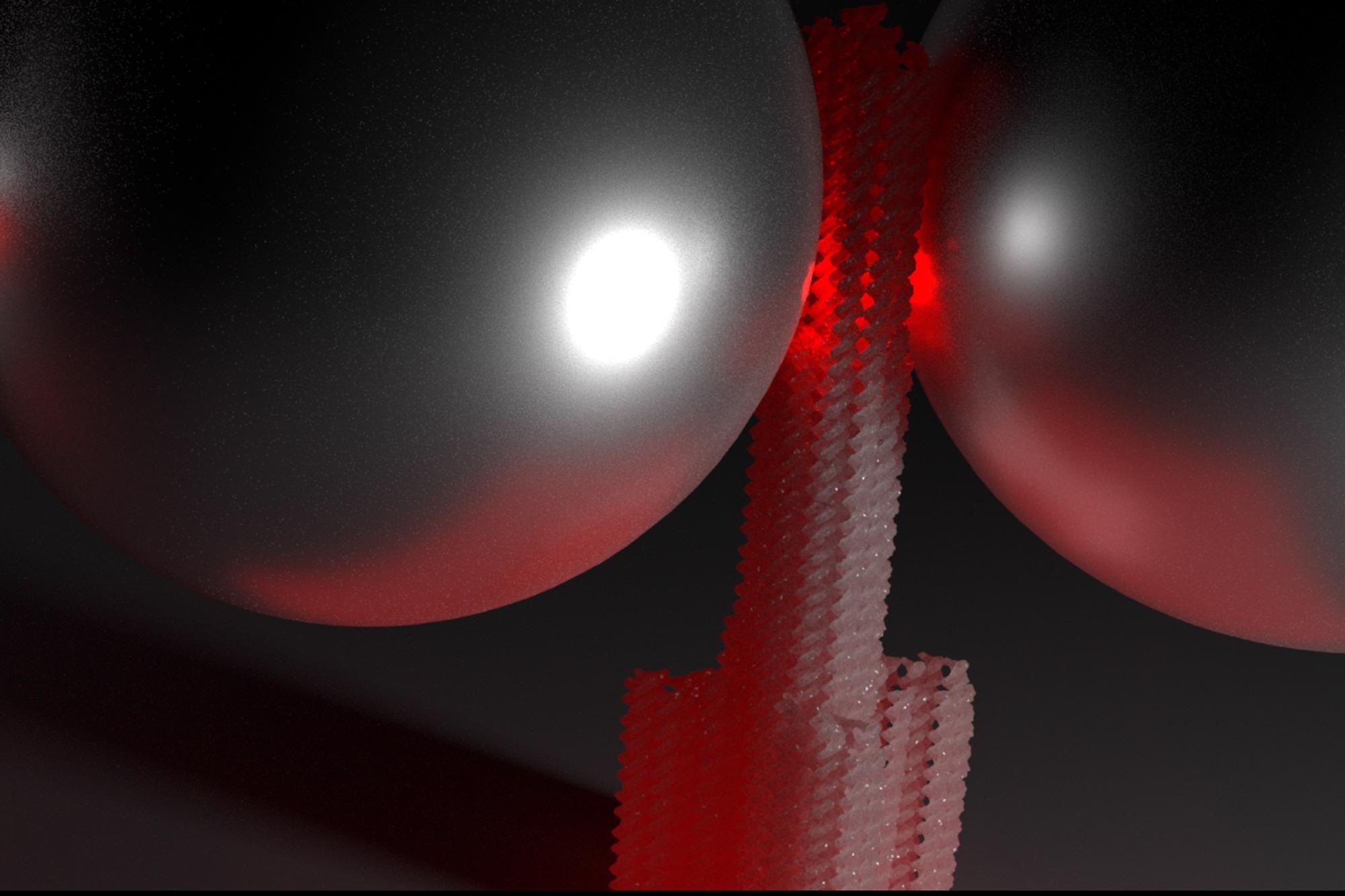Feb 15 2021
Biomarkers have a crucial role in disease diagnosis and evaluation of the disease course. Proteins, genes, lipids, hormones and other classes of molecules are among the markers currently in use.

Image Credit: Lennart Grabenhorst/Tinnefeld Group.
Although biomarkers are found in the cerebrospinal fluid, blood, urine and different types of tissues, the majority of them have one thing in common: They exist in very low concentrations and are thus technically difficult to detect and measure.
Several detection procedures involve the use of molecular probes, like short nucleic-acid sequences or antibodies designed to attach to particular biomarkers. When a probe identifies and attaches to its target, physical or chemical reactions result in fluorescence signals.
Methods such as these work well, given that they are sufficiently sensitive to identify the relevant biomarker in a high percentage of all patients who have it in their blood.
Before using such fluorescence-based tests practically, it is essential to amplify the biomarkers themselves or their signals. The ultimate aim is to allow medical screening to be performed directly on patients, without the need to send the samples to a distant laboratory for analysis.
Molecular Antennas Amplify Fluorescence Signals
Philip Tinnefeld, a Chair in Physical Chemistry at LMU, has created an approach for identifying the levels of biomarkers present in low concentrations. He has successfully coupled DNA probes to small silver or gold particles. Pairs of particles (called 'dimers') serve as nano-antennas and amplify the fluorescence signals.
The strategy works as explained here: Interactions between the nanoparticles and incoming light waves increase the intensity of local electromagnetic fields, and this thus results in a huge increase in the amplitude of the fluorescence. Thus, bacteria with antibiotic resistance genes and even viruses can be detected particularly.
DNA-based nano-antennas have been studied for the last few years. “But the fabrication of these nanostructures presents challenges.
Kateryna Trofymchuk, Study Joint First Author, LMU
Philip Tinnefeld’s research group has now successfully configured the components of their nano-antennas more accurately, as well as positioned the DNA molecules that act as capture probes at the signal amplification site.
In combination, these modifications allow a more effective amplification of the fluorescence signal. Much more molecules can be captured in the tiny volume involved, which is of the order of zeptoliters (a zeptoliter is 10−21 of a liter).
The high degree of positioning control is enabled by DNA nanotechnology, which leverages the structural properties of DNA to allow the assembly of nanoscale objects of all types—in huge numbers. “In one sample, we can simultaneously produce billions of these nano-antennas, using a procedure that basically consists of pipetting a few solutions together,” noted Trofymchuk.
Routine Diagnostics on the Smartphone
In the future, our technology could be utilized for diagnostic tests even in areas in which access to electricity or laboratory equipment is restricted. We have shown that we can directly detect small fragments of DNA in blood serum, using a portable, smartphone-based microscope that runs on a conventional USB power pack to monitor the assay.
Viktorija Glembockyte, Study Joint First Author, LMU
In general, the latest smartphones are equipped with improved cameras. Besides that, all that is required is a laser and a lens—two low cost and readily available components. The LMU researchers employed this fundamental recipe to build their prototypes.
They showed that this set-up could detect DNA fragments specific for antibiotic resistance genes in bacteria. However, it is possible to easily modify the assay to detect an entire range of interesting target types, like viruses.
The past year has shown that there is always a need for new and innovative diagnostic methods, and perhaps our technology can one day contribute to the development of an inexpensive and reliable diagnostic test that can be carried out at home.
Philip Tinnefeld, Chair in Physical Chemistry, LMU
Journal Reference:
Trofymchuk, K., et al. (2020) Addressable nanoantennas with cleared hotspots for single-molecule detection on a portable smartphone microscope. Nature Communications. doi.org/10.1038/s41467-021-21238-9.